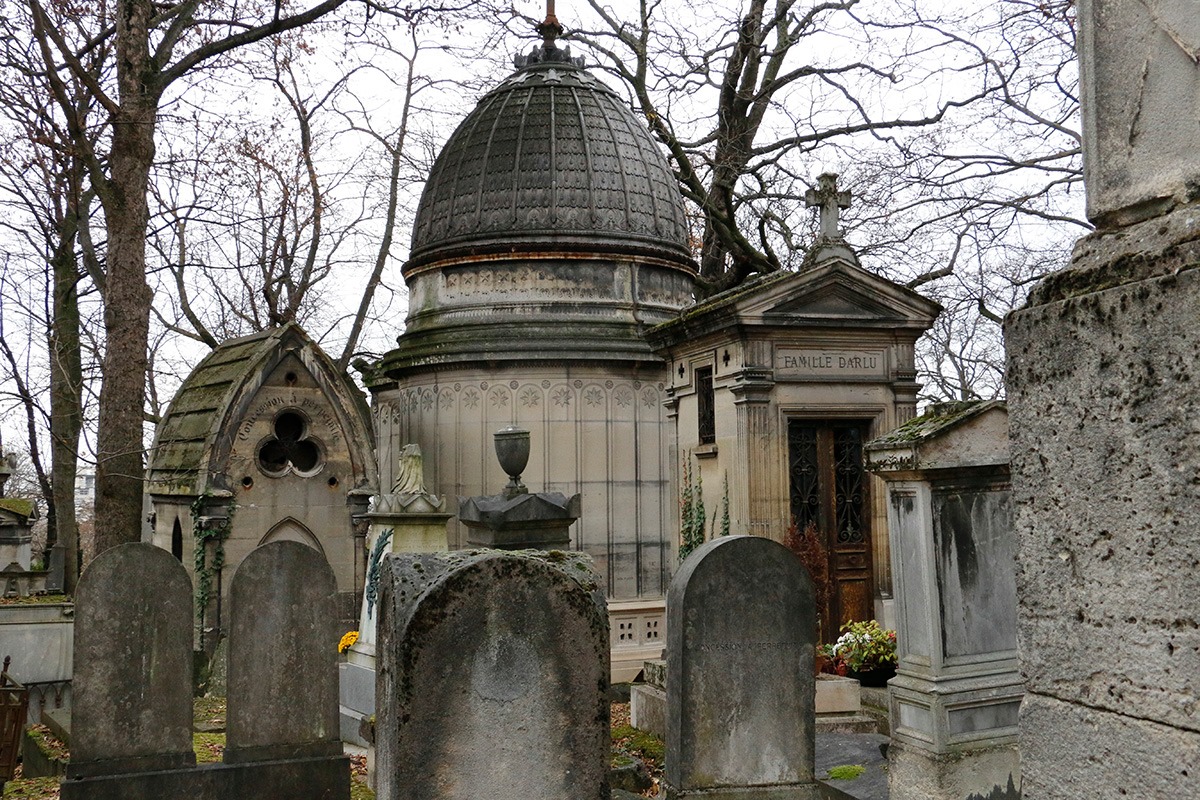Both cemetery and museum, the often-explored Père-Lachaise cemetery in Paris is a stunning open-air space filled with dazzling sculpture as well as architecture. At over 107-acres, it is can also be exceedingly difficult to navigate, this burial ground of highly celebrated artists, writers, and performers.
Some visitors come to pay homage to the famous and revered, others to meander through the stunning collection of sculptural art, and still others to simply revel in the atmosphere of it exudes of both peace and majesty. Regardless of the reason for a visit – or an armchair trip – each visitor would do well to start their exploration with Campbell’s book, City of Immortals. It’s a thoroughly absorbing and enjoyable read, as well as a monumentally inclusive view of the cemetery from the date it was founded in 1804 to today.
Just as Pere-Lachaise is many things to many people, so too is this book: with a richly comprehensive map, a devouring curiosity about history and the magic the cemetery contains for its visitors; it is a guide, history lesson, and fascinating look at a location which could take almost a lifetime to fully explore.

As a writer and photographic artist, Campbell does the vast scope of the place justice with over 100 color photographs as well as historical lithographs, and detailed map. It’s a guide that not only points out some of the most famous spots in the cemetery, but provides a path through an almost labyrinthine location that can exhaust even the most intrepid visitor.
Having visited many years ago, the magical and mysterious quality of the cemetery is indisputable. However, for the casual visitor, it can also seem overwhelming. It is a Louvre for the departed. With that in mind, City of Immortals is more than a practical guide. It’s a roadmap through the past, and present, a way to delve deeper into a what is a true city of the dead, with the spirits of iconic and innovative creative voices almost palpable.
More prosaically, the book offers an insightful look at what was a highly innovative design for memorial grounds when first established. But best of all, this is a chronicle of Campbell’s own personal visits to the cemetery over a period of some thirty years. Offering three different “tours,” and a focus on 84 of the most famous gravesites from dancer Isadora Duncan to composer Frederic Chopin, poet Gertrude Stein, and artists such as Modigliani, her photographs are lushly, lovingly detailed; and in addition to her own, works by the U.K.-based landscape photographer Joe Cornish, compliment them. In depicting these works of sculptural art, they are art themselves.
In short, Campbell’s first-person account of the cemetery is quite wonderful. Her absorbing and comprehensive knowledge of the memorial grounds makes full use of her visits to the location. A viscerally entertaining and absorbing read, particularly in these pandemic times, it is comforting to “meet” those who have passed before us. It is also a thrill to explore what is arguably a different realm: not just a magnificent homage to the departed, but a special place, difficult to traverse without a map, enormously rewarding for those who do.
Released by Goff Books, peruse the map for future in-person visits, and in the meantime, take a stroll by proxy through The City of Immortals.


